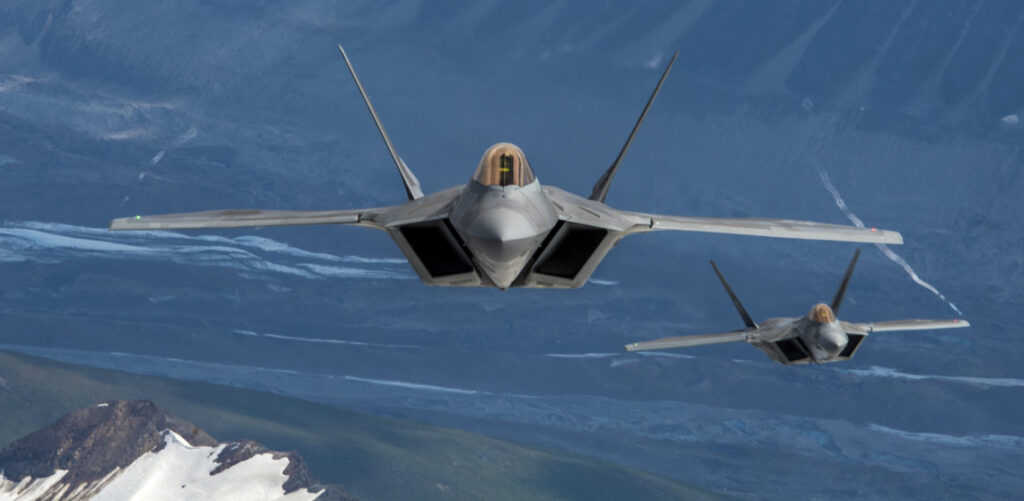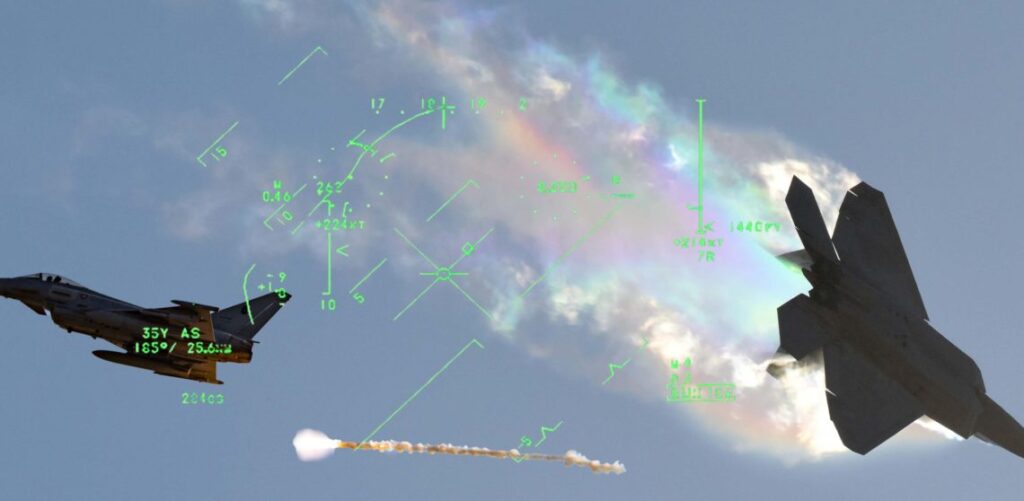It’s been UFO-hunting season over North America for the past week, with at least three unidentified objects downed by American military aircraft since Friday.
Of course, the use of the acronym UFO is meant here in the very literal sense — thus far, Pentagon officials have been clear that they are not sure what these unusual airborne objects are, though the White House and Pentagon spokesman John Kirby have both dismissed the idea that they could have an extra-terrestrial origin.
These intercepts began less than a week after the United States shot down a large Chinese surveillance balloon off the coast of South Carolina on February 4, and within days of American defense systems reportedly adjusting the filters of the nation’s air defense sensor net to better identify slow-moving, high altitude objects.
Here’s a brief summary of all three intercepts and how they played out.
Related: The US Navy just released these 3 infamous UFO videos
UFO over Alaska reportedly ‘interfered’ with F-35 sensors before being shot down by F-22

On Thursday night, a pair of F-35 Joint Strike Fighters was dispatched to intercept an unusually high altitude “object” that had briefly violated American airspace and that was currently flying over the Arctic Ocean near Alaska. The following morning, another pair of F-35s conducted a second intercept to gather more information about the system, in hopes of assessing its origin, intent, or capabilities.
The object was flying at approximately 40,000 feet, making it a potential threat to civilian and commercial air traffic. Conflicting reports from the pilots involved in these intercepts have led to rampant speculation about just what exactly was intercepted, but at least one pilot reportedly claimed that the object “interfered with their sensors” as they approached it.
“We’re calling this an object because that’s the best description we have right now,†Petagon spokesman Jack Kirby said. “We don’t know who owns it – whether it’s state-owned or corporate-owned or privately-owned, we just don’t know.â€
The F-35 is a particularly well-suited platform for these types of intercepts specifically because of its powerful sensor suite and data-fusing onboard computers. The fighter’s distributed aperture system, for instance, includes six infrared cameras positioned all around the aircraft, which tie into the jet’s electro-optical helmet-qued targeting system, making it not only easy for pilots to keep track of threats and friendlies in the area, but even to target threats that appear behind the aircraft.
On Friday, President Biden ordered that the object be shot down, as its altitude posed a threat to civilian and commercial air traffic. Two F-22 Raptors were sent to intercept, with one downing the object using an AIM-9X Sidewinder missile — the same weapon leveraged to down the Chinese balloon on February 4.
Related: Interview with Nick Pope: The man who investigated Aurora for the UK government
UFO over Canada shot down by American F-22

Another object was also detected in the region on Friday night, with tracking continuing into Saturday when the object entered Canadian airspace. President Joe Biden and Canadian Prime Ministry Justin Trudeau reportedly discussed the potential threat and the importance of recovering the object for analysis, before Trudeau requested that American F-22 Raptors engage and shoot the object down.
“I ordered the take down of an unidentified object that violated Canadian airspace. NORAD Command shot down the object over the Yukon. Canadian and U.S. aircraft were scrambled, and a U.S. F-22 successfully fired at the object,” Trudeau posted on Twitter.
Like all of these intercepts thus far, this object was downed by an AIM-9X Sidewinder missile, which is an infrared-guided weapon and the least expensive air-to-air missile in the U.S. inventory, despite a price tag north of $470,000 per unit.
In statements since its downing, Canadian defense officials said that this object was a balloon with a tethered payload. Trudeau added that Canadian forces were dispatched to recover and analyze the wreckage.
Related: Unidentified flying object buzzes American Airlines flight
UFO shot down over Lake Huron near Michigan

On Sunday, yet another unusual object, this one flying over Lake Huron near Michigan, was shot down by American fighters. This object was reportedly tracked briefly over Montana before emerging on radar screens once again on Sunday, flying at the relatively low altitude of 20,000 feet.
This object was reportedly shaped like an octagon and had “strings” hanging off of it, with no discernable payload. The object was shot down by an F-16 Fighting Falcon, which could be called the workhorse fighter of the American airpower apparatus. The object was assessed to pose no military threat, but its low altitude made it a potential hazard for both civilian and commercial air traffic, and it also arose concerns about electronic surveillance.
Interestingly, it took not one, but two AIM-9X Sidewinder missiles to bring down this object — an observation first made on Twitter by Tyler Rogoway of The Warzone based on images of the returning jets, but later confirmed by Defense officials.
“I wouldn’t really call it a balloon… I don’t know what… I can see it outside with my eyes,†one of the pilots said into his radio during the intercept in a recording posted by The Warzone. “Looks like something… there’s some kind of object that’s distended… it’s hard to tell, it’s pretty small.â€





